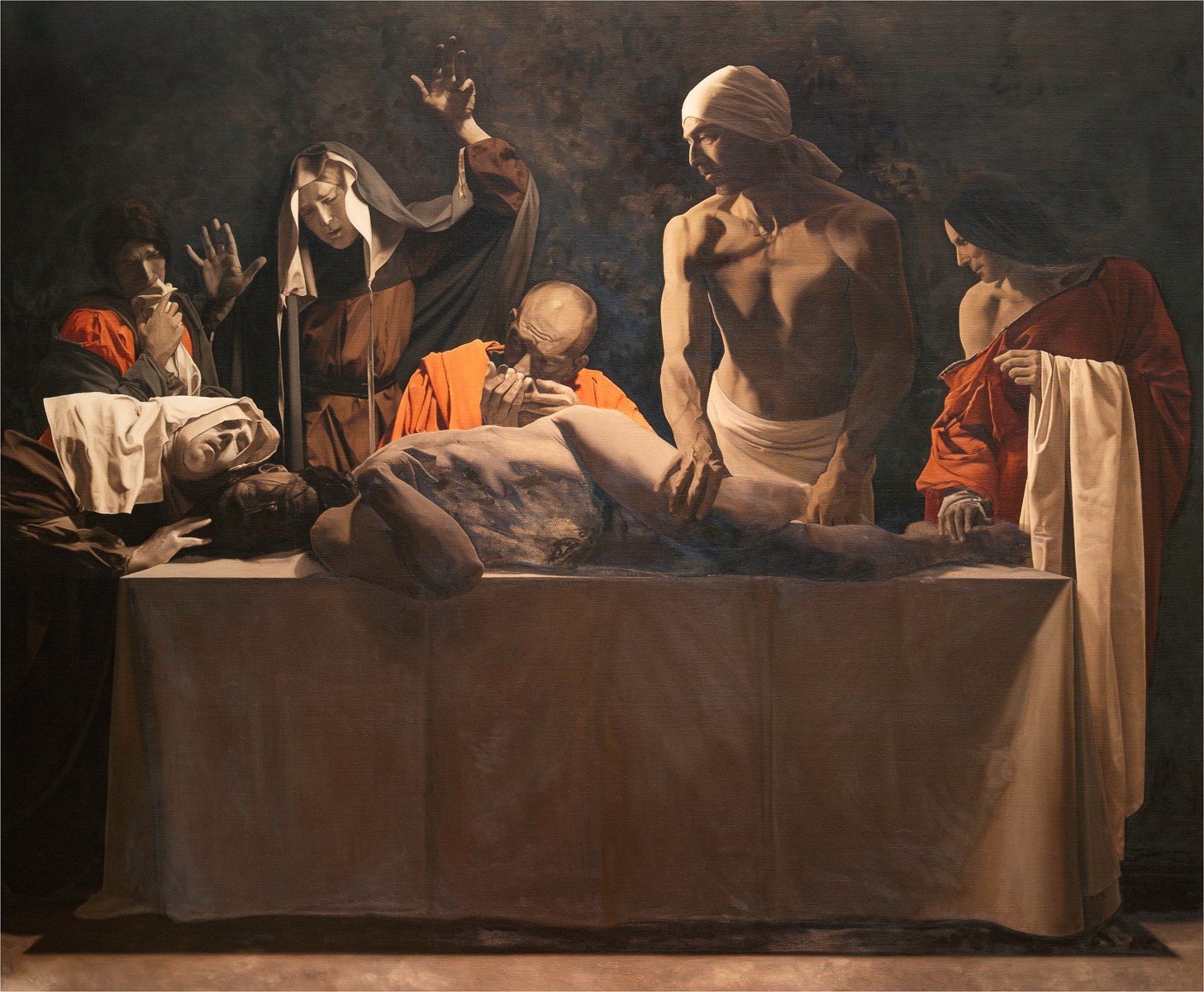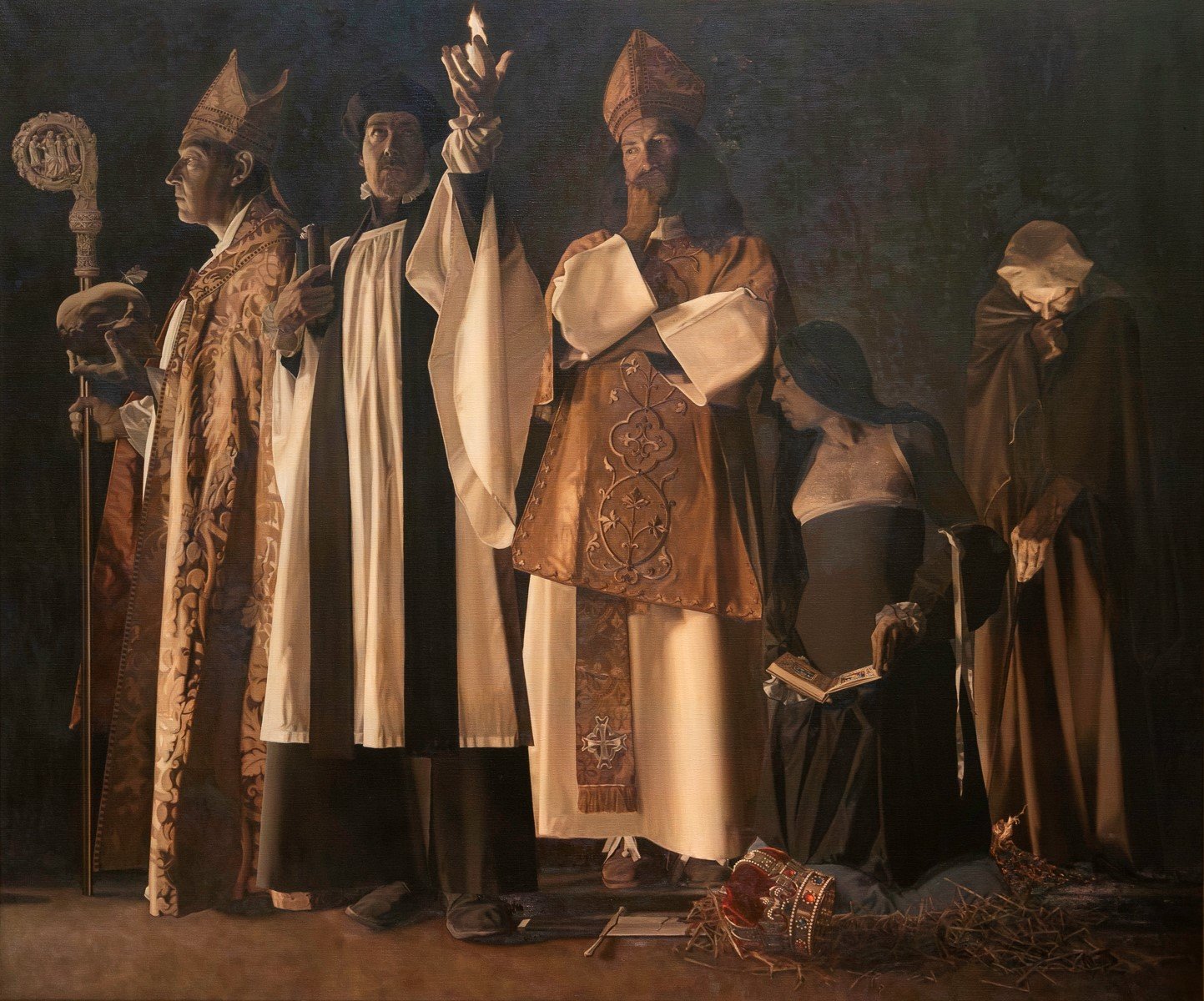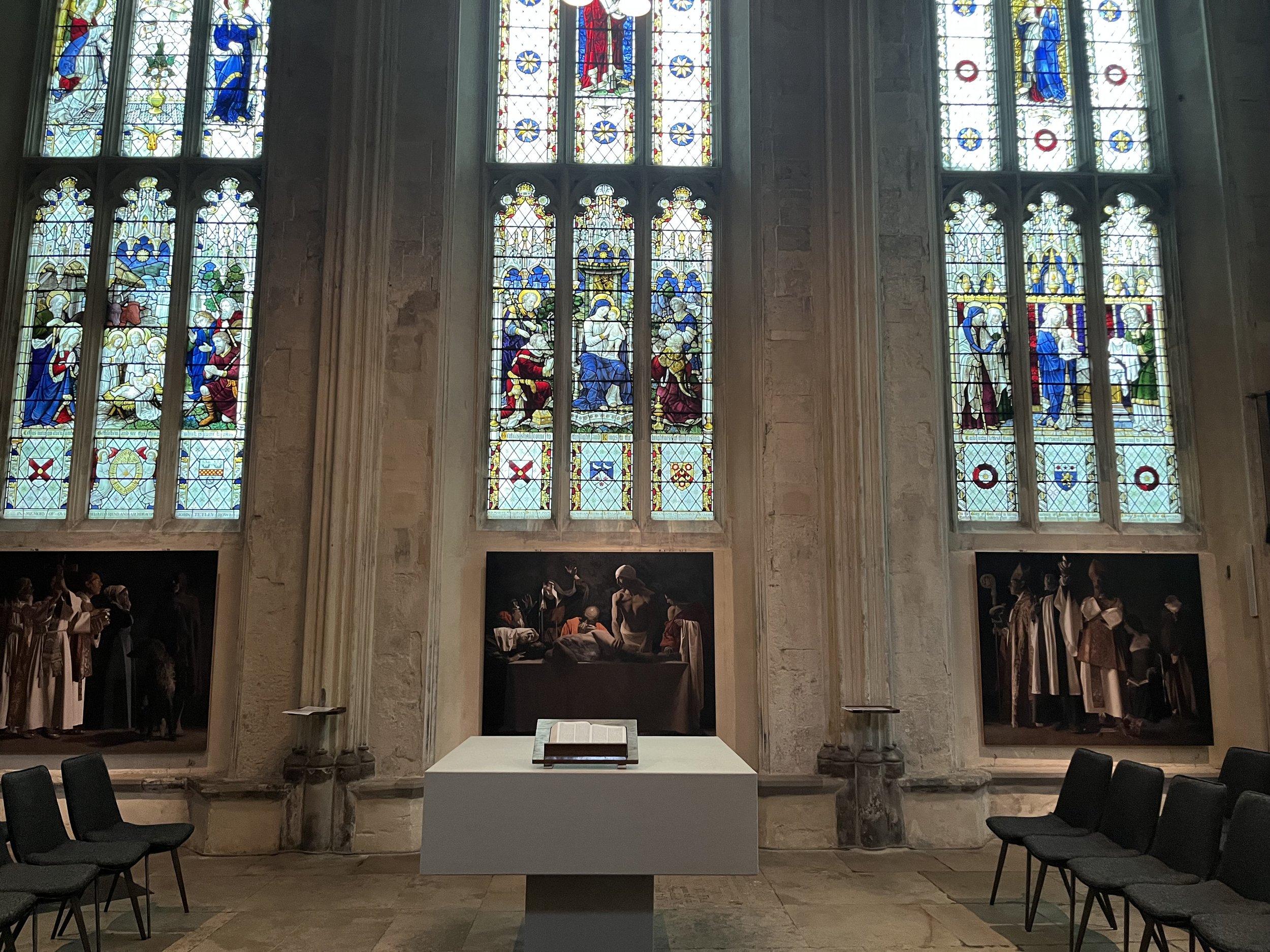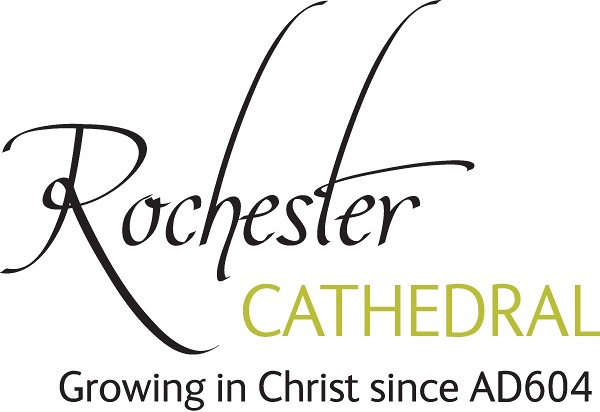The Rochester Triptych
Scott Norwood Witts
On display in the Lady Chapel
Open until Pentecost
Three amazing oil paintings have been unveiled at Rochester Cathedral. The Rochester Triptych has been painted by artist Scott Norwood Witts.
The Rochester Triptych is a series of oil paintings by artist Scott Norwood Witts. It was commissioned by Dean Hesketh in 2019 and will be displayed annually as part of Rochester Cathedral’s Holy Week preparations. The Triptych provides a backdrop for reflection and prayer on those who have lived and died for their beliefs.
The central panel depicts the Entombment of Christ following his crucifixion on Good Friday. The mourners around him are unnamed and the artist invites the viewer to speculate on their identity.
Witnessing this scene on the other two panels are saints, bishops and martyrs associated with the Cathedral and the history of the Church in England.




Discover more about the subjects of the paintings
Witnessing the Entombment of Christ are Saints, Bishops and Martyrs associated with the Cathedral and the development of the Church of England and the wider Anglican Communion. Find out more about these figures below.
Anne Boleyn (c. 1501 – 1536)
“ This Triptych is of immense importance in terms of the revaluation of Anne Boleyn as a religious leader, but also other figures who have been neglected or written out of the history books. We are truly fortunate to have this work of art. ”
Queen, reformer, martyr. A daughter of the Diocese of Rochester and educated at the French Court. She was instrumental in circulating Tyndale’s English translated bible and imported many contraband religious books, providing Henry VIII with the grounds for establishing the Church of England. She had significant influence in promoting evangelical priests to bishops who would became the backbone of the early reformed Church. Her radical model for reform led her on a collision course with Thomas Cromwell and the King. She was abruptly arrested, tried and condemned to death on charges of treason and sexual misconduct. She was beheaded with a sword at the Tower of London on 19 May 1536.
Her inclusion in this Triptych marks Anne Boleyn’s inclusion to the Rochester Cathedral calendar of Holy Days. She will be marked in prayer each May 15th, the date of her trial and condemnation.
St Justus (d. 627)
Monk, bishop and archbishop. Amongst the first mission sent to Christianize the British Isles by Pope Gregory I in 601. He was consecrated as the first Bishop of Rochester in 604, establishing the Cathedral library and evangelizing many from the Anglo-Saxon Mercian kingdoms, including King Aethelbert of Kent. He was consecrated Archbishop of Canterbury in 624. Commemorated 10 November.
St Paulinus (d. 644)
Monk, bishop and archbishop. Amongst Pope Gregory I’s second missionary group sent to Christianize the British Isles, Paulinus arrived in 604. He was consecrated Bishop of York in 625 and was instrumental in Christianizing many parts of the Mercian kingdoms of England, particularly in the north, through his conversion of Anglo-Saxon nobility. He was elected the first Archbishop of York, but returned to Rochester before taking office and where he was consecrated Bishop of Rochester. Commemorated 10 October.
St Ithamar (d. 665)
The first Anglo-Saxon Bishop of Rochester, described by the historian Bede as ‘of the Kentish nation, but not inferior to his (episcopal) predecessors for learning and conduct of life’. There are no existing contemporary accounts of his life, but as a shrine was established in the Cathedral after his death suggests a figure of significance.
Gundulf of Rochester (c.1024 - 1108)
Monk, bishop, builder. Sent to England with a papal commission to reorganize English monasticism, Gundulf was consecrated Bishop of Rochester in 1075. He began reconstructing the almost derelict Cathedral church and created the western front we see today. He went on to build Rochester Castle and the White Tower of the Tower of London amongst others.
William of Perth (m. 1201)
Pilgrim and martyr. Travelling toward Rochester on pilgrimage, perhaps to Canterbury or Jerusalem, William was murdered. His body was discovered and removed to the Cathedral for burial by the monks of the priory. Miracles and healing properties became associated with his tomb and a cult soon developed. He was canonized in 1256, and his shrine became an international place of pilgrimage and perhaps the most visited and venerated in the Cathedral. Commemorated 23 May.
John Fisher (c. 1469 – 1535)
Bishop, cardinal, martyr. A vigorous supporter of Queen Katharine of Aragon during King Henry VIII’s attempts to divorce her, he was imprisoned several times for opposing the King’s break with Rome and the establishment of the Church of England. He was created cardinal by Pope Paul III whilst imprisoned in the Tower of London. After being tried and condemned for treason, he was beheaded on 22 June 1535. Commemorated 6 July.
Nicholas Ridley (c. 1500 – 1555)
Bishop, reformer, martyr. A Doctor of Divinity at Cambridge, thoroughly committed to the reform of the church. He worked alongside Archbishop Thomas Cranmer in compiling the first Book of Common Prayer. Consecrated Bishop of Rochester in 1547 and then Bishop of London in 1550. Following the succession of Mary I, Ridley and Cranmer, amongst other prominent reformers were arrested, imprisoned and condemned for heresy. He was burnt at the stake at Oxford on 16 October 1555 for supporting the accession of Lady Jane Grey. Commemorated 16 October 1555
Joan Beech (m. 1556)
Widow, martyr. A resident of Tonbridge arrested during the religious persecution of Mary I. Nothing is known of her life other than that from her trial under the Bishop of Rochester on several charges of heretical belief including:
‘[....] she believeth not that the holy catholic church to be her mother, but believeth only the Father of heaven to be her Father.’
‘[....] the sacrament of the altar under forms of bread and wine, not to be the very body and blood of our Saviour [....] but a token and remembrance of his death.’
She was condemned to death and together with John Harpole burned at the stake in Rochester on 1 April 1556. Commemorated 1 April.
Isabella Gilmore (1842 – 1923)
Deaconess. A nurse at Guy’s Hospital in London, encouraged by the Bishop of Rochester to be ordained to the recently established Order of Deaconess in the Church of England. She was the first in the diocese. They held a specific commission of service to the needs of the most impoverished areas of South London. Commemorated 16 April.
About the Artist
Scott Norwood Witts primarily uses oil paint in exploring the human experience in context with culture, religion, politics and history. His highly dramatic images, often cast in contrasting light and shadow, draw attention to the centrality of the body and the space it inhabits as the primary instruments of communication. By obscuring and revealing through the use of chiaroscuro, concepts of space, time and dimension are concentrated in the body in context, articulated as a metaphysical vehicle embodying a deeper meaning. Before painting, Norwood Witt aims to inhabit each character to generate the deepest empathy and to draw out the emotions from the individual. By using himself as model, a traditional artistic model, he allows the viewer to focus on the emotions depicted instead of the individual features. The Rochester Triptych locates this approach in individual expressions of faith and religious experience.














